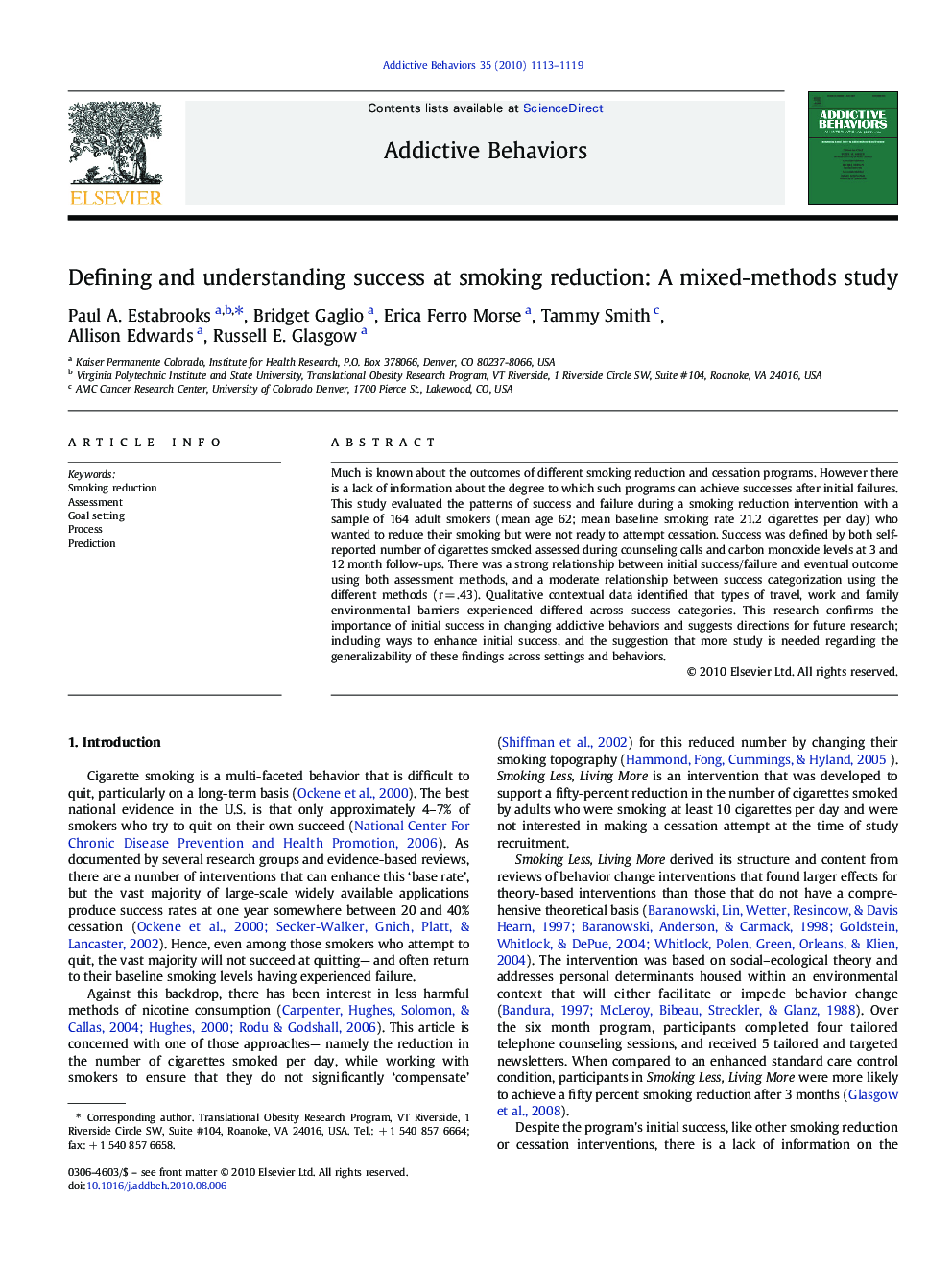| Article ID | Journal | Published Year | Pages | File Type |
|---|---|---|---|---|
| 900079 | Addictive Behaviors | 2010 | 7 Pages |
Much is known about the outcomes of different smoking reduction and cessation programs. However there is a lack of information about the degree to which such programs can achieve successes after initial failures. This study evaluated the patterns of success and failure during a smoking reduction intervention with a sample of 164 adult smokers (mean age 62; mean baseline smoking rate 21.2 cigarettes per day) who wanted to reduce their smoking but were not ready to attempt cessation. Success was defined by both self-reported number of cigarettes smoked assessed during counseling calls and carbon monoxide levels at 3 and 12 month follow-ups. There was a strong relationship between initial success/failure and eventual outcome using both assessment methods, and a moderate relationship between success categorization using the different methods (r = .43). Qualitative contextual data identified that types of travel, work and family environmental barriers experienced differed across success categories. This research confirms the importance of initial success in changing addictive behaviors and suggests directions for future research; including ways to enhance initial success, and the suggestion that more study is needed regarding the generalizability of these findings across settings and behaviors.
Research Highlights►A concurrent nested mixed-methods approach was used to quantitatively track success and failure of patients in Smoking Less, Living More, an efficacious harm reduction program and qualitatively gather information, from the perspective of the target population, on the context within which behavior change attempts were being made. ►We found that initial success in achieving a 1/3 reduction was critical to longer-term success and that an unsupportive home environment, job insecurity, and to travel barriers were common in those that ultimately failed to reduced their smoking. ►We concluded that future research should examine the effectiveness of easier versus more challenging initial goals and of provision of general coping strategies versus strategies to address the targeted barriers identified by unsuccessful participants. ►As ours was the first, mixed-methods approach in this topic area, we encourage other researchers to utilize mixed-method approaches as a primary study design to enhance the depth of understanding of the potential underlying mechanisms of intervention effectiveness.
